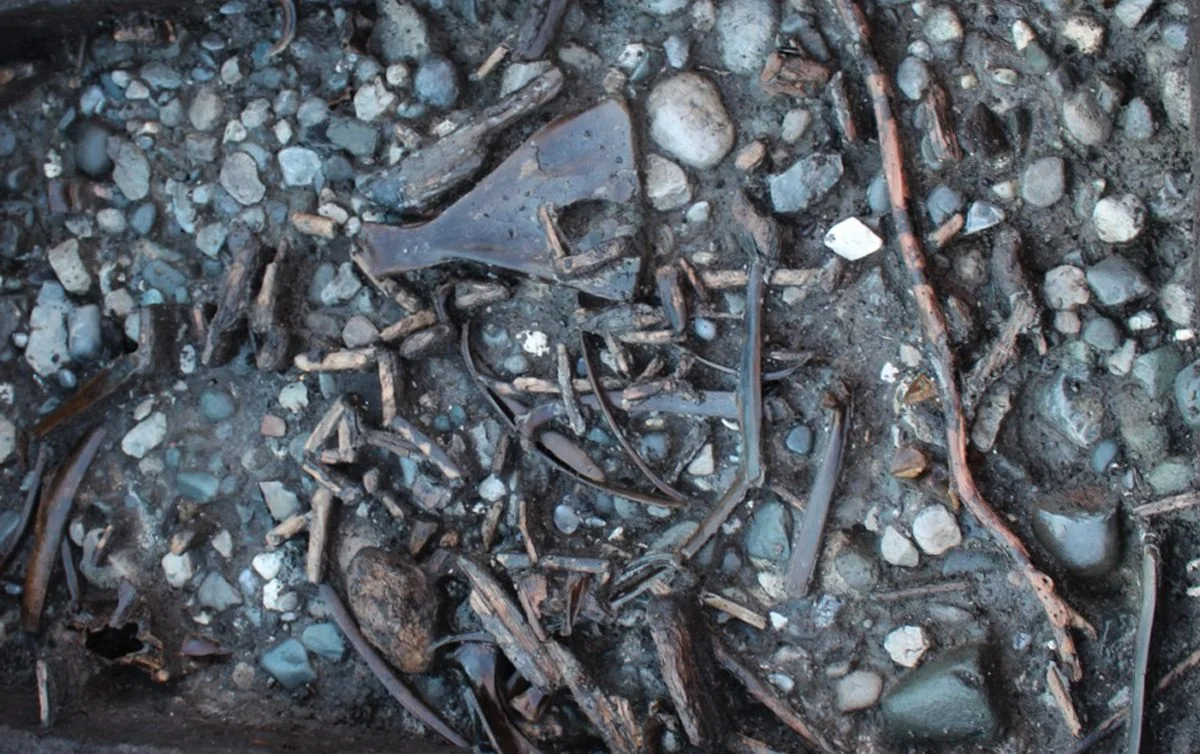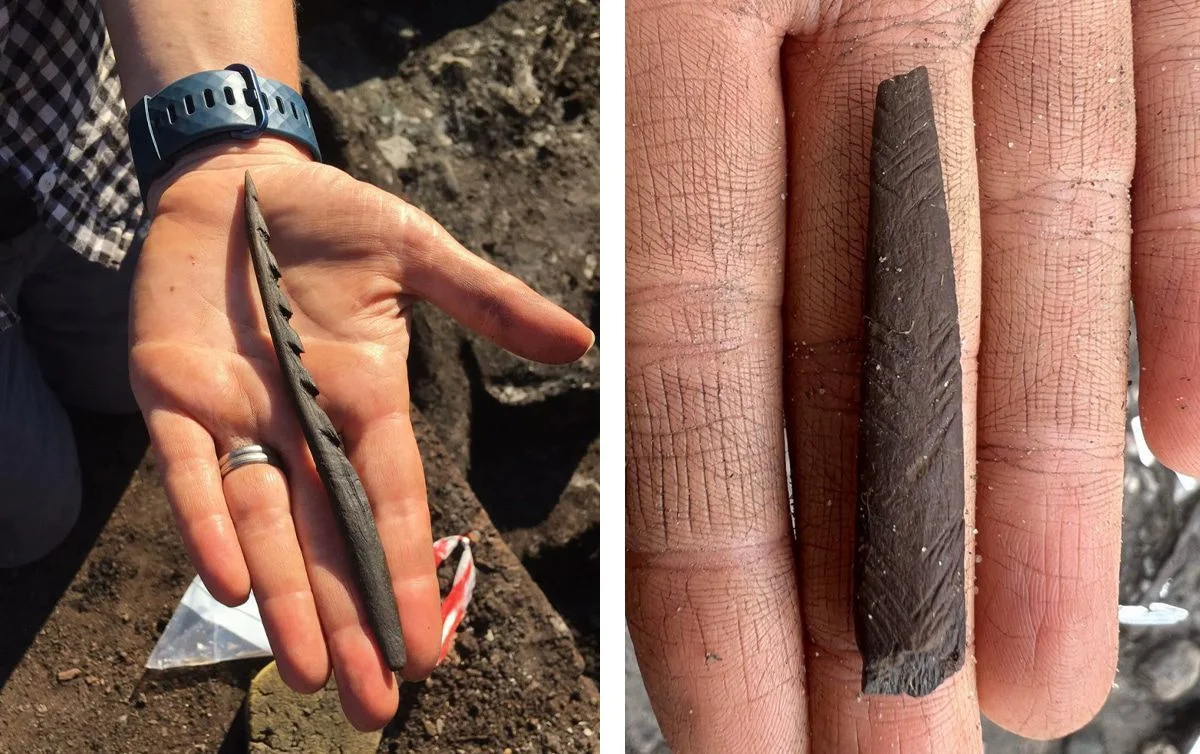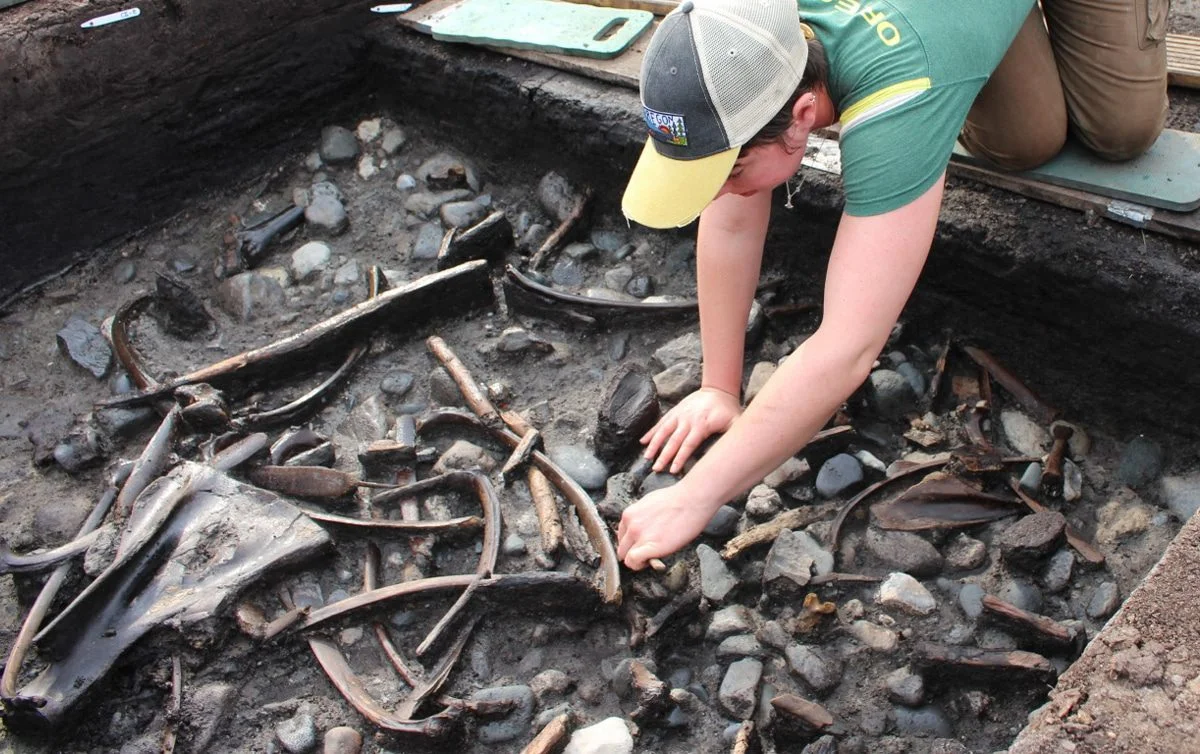Archaeologists from the University of Chester have discovered a Stone Age hunter-gatherer settlement during excavations near Scarborough, England.
During the Mesolithic, or ‘Middle Stone Age’ period, the settlement was situated on the shores of an island located in an ancient lake, which over thousands of years became buried in thick deposits of peat that gradually buried and preserved the site.
Excavations have revealed a multitude of artefacts, including evidence of the animals that were hunted by their remains, tools and weapons made from bone and antler, and rare traces of woodworking.
Dr Nick Overton from The University of Manchester said: “It is so rare to find material this old in such good condition. The Mesolithic in Britain was before the introduction of pottery or metals, so finding organic remains like bone, antler and wood, which are usually not preserved, are incredibly important in helping us to reconstruct peoples’ lives.”

A closer examination of the animal bones has shown that the people were hunting elk, red deer, beavers and water birds, which were butchered, and parts intentionally deposited into the wetlands around the settlement.
Several of the bone and antler weapons appear to be decorated and were dismantled before also being deposited in the wetlands. This suggests that the inhabitants considered the hunt and butchering of their prey a sacred act, and had strict rules in the handling of animal remains and objects.

Dr Amy Gray Jones from the University of Chester: “People often think of prehistoric hunter-gatherers as living on the edge of starvation, moving from place to place in an endless search for food, and that it was only with the introduction of farming that humans lived a more settled and stable lifestyle. But here we have people inhabiting a rich network of sites and habitats, taking the time to decorate objects, and taking care over the ways they disposed of animal remains and important artefacts.”
“These aren’t people that were struggling to survive. They were people confident in their understanding of this landscape, and of the behaviours and habitats of different animal species that lived there,” added Gray.
Header Image Credit : University of Chester







